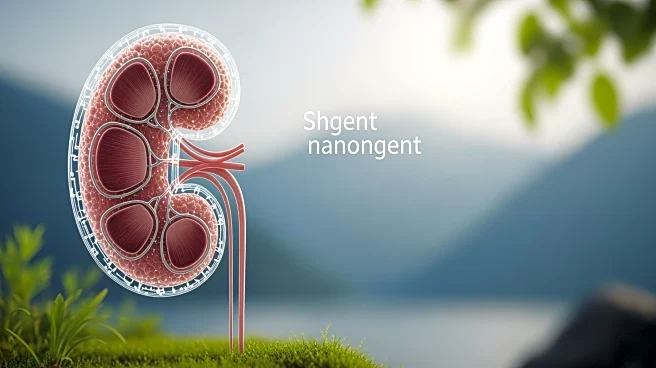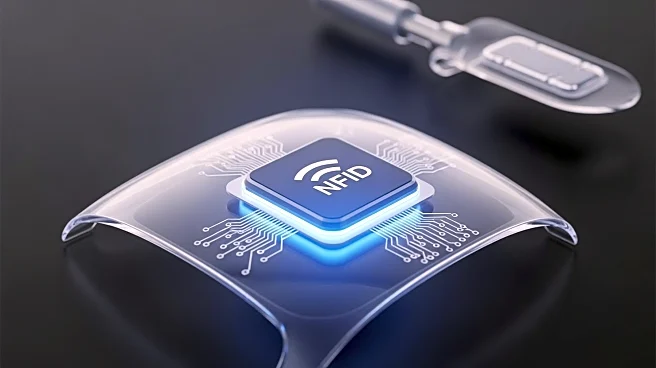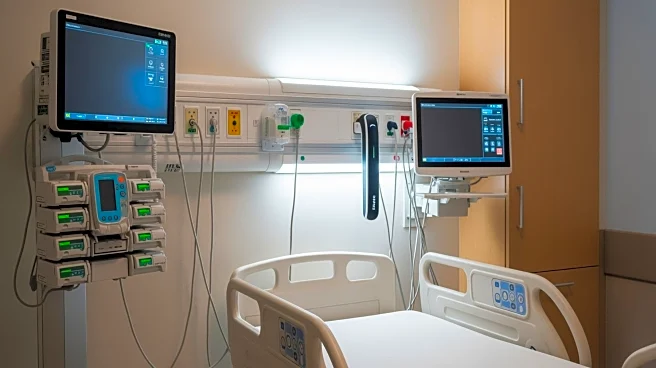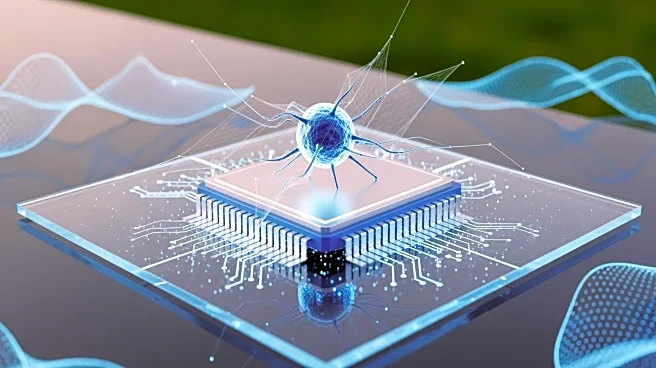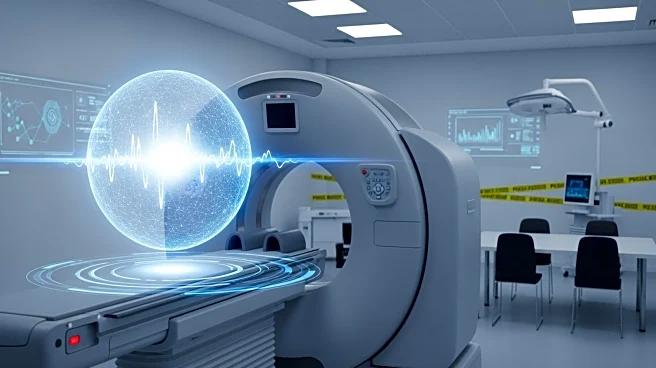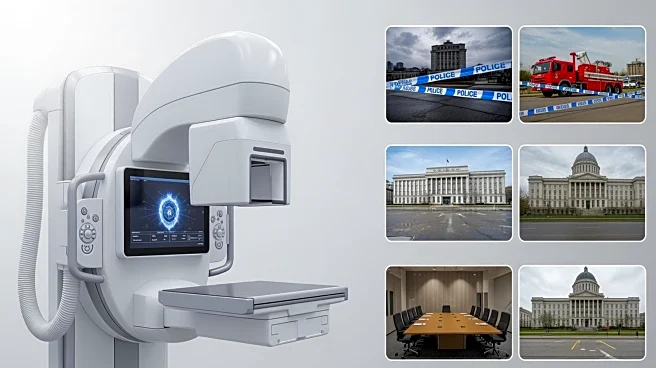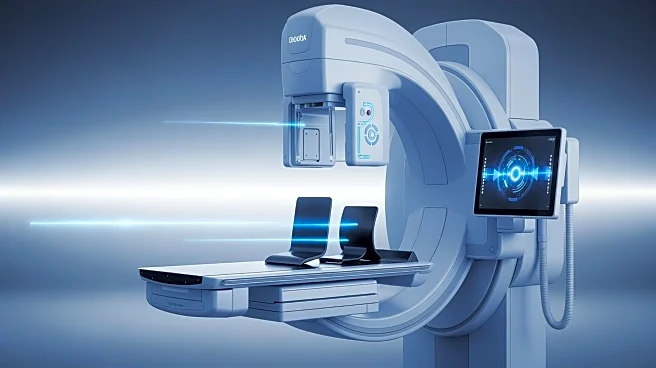What's Happening?
A recent study published in Nature has introduced a novel CT contrast nanoagent, E-Au-Agents, designed to target the proximal tubular epithelium for kidney disease imaging and repair. These agents are composed of ultrasmall-sized gold nanoparticles coated
with EGT, synthesized through a one-step thermal reduction process. The study highlights the superior X-ray attenuation and antioxidative properties of E-Au-Agents compared to traditional iodinated contrast agents. The nanoagents exhibit high CT contrast, are renal-clearable, and specifically target proximal tubules by recognizing tubular OCTN1 transporters after glomerular filtration. In vivo studies demonstrated rapid renal targeting and efficient clearance, with E-Au-Agents showing enhanced kidney imaging capabilities over clinical iodine-based agents.
Why It's Important?
The development of E-Au-Agents represents a significant advancement in medical imaging and kidney disease treatment. Traditional iodinated contrast agents often pose risks of nephrotoxicity and nonspecific biodistribution, limiting their effectiveness in renal function evaluation. E-Au-Agents offer a promising alternative with their reno-targeting and reno-protective capabilities, potentially reducing the risk of kidney damage during imaging procedures. This innovation could lead to more accurate and safer diagnostic practices, benefiting patients with kidney diseases and improving outcomes in renal healthcare.
What's Next?
The study suggests further investigation into the application of E-Au-Agents for early detection of kidney diseases and protection of renal function. Future research may focus on clinical trials to validate the efficacy and safety of these nanoagents in human subjects. Additionally, exploring the potential of E-Au-Agents in preventing acute kidney injury (AKI) development could open new avenues for therapeutic interventions. Stakeholders in the medical imaging and nephrology fields may closely monitor these developments for potential integration into clinical practice.
Beyond the Headlines
The introduction of E-Au-Agents could trigger a shift in the approach to kidney imaging and treatment, emphasizing the importance of targeted and biocompatible solutions. Ethical considerations regarding the accessibility and cost of such advanced technologies may arise, necessitating discussions on equitable healthcare delivery. Long-term implications include the potential reduction in healthcare costs associated with kidney disease management and improved patient quality of life.
